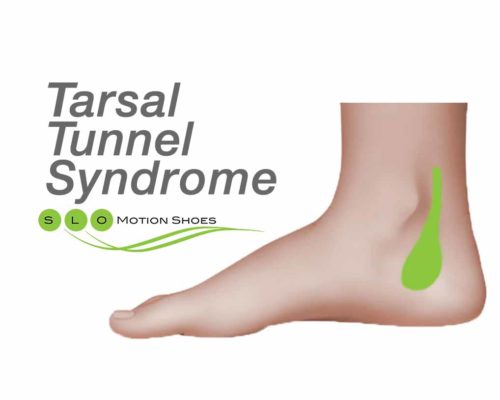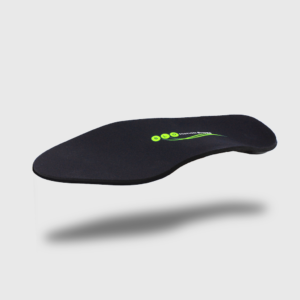The tarsal tunnel is a narrow space on the inside of your ankle below the ankle bone that houses the tibial nerve. Tarsal tunnel syndrome refers to the painful entrapment, or compression, of the tibial nerve within the tarsal tunnel.

Symptoms
Burning sensation that radiates into arch of the foot, heel or toes
Tingling or numbness in the sole of the foot
Pain described as “knife like”, “sharp”, “shooting”, or “burning”
Pain worsens throughout day
Area on inside of ankle under ankle bone may be tender to touch
Causes
Anything that produces compression on the tibial nerve
Abnormal foot pronation (rolling inward)
Enlarged or abnormal structure within the tarsal tunnel, such as varicose vein, swollen tendon, bone spur, cyst, or scar tissue
An injury that causes inflammation in the area
Diseases that cause swelling, such as diabetes or arthritis
Often found in conjunction with plantar fasciitis , a form of heel pain
Treatments
Treatment focus is on reducing inflammation and pressure on the inflamed nerve. Surgery may be recommended if conservative treatment is ineffective.
Ice on affected area
Rest
Over the counter pain medication, such as ibuprofen (Advil, Motrin) or naproxen (Aleve), as needed
Supportive shoe
Custom or over the counter orthotic
Immobilization with CAM boot
Steroid injection
Physical therapy
Tarsal tunnel syndrome is a painful entrapment neuropathy involving the posterior tibial nerve as it enters the foot. The term entrapment neuropathy denotes injury to a nerve from an external source. Examples of an entrapment neuropathy could include sciatica symptoms of low back pain originating from an injured disc in the back region that is putting pressure on the nerve root from the spinal cord. Another example would include carpal tunnel syndrome which is hand and wrist pain associated oftentimes with overuse leading to inflammation of the nerves at the wrist level.
Tarsal tunnel, like carpal tunnel is pain associated with abnormal function of the posterior tibial nerve as it enters the foot. Symptoms associated with tarsal tunnel syndrome include pain with descriptions of “knife like”, “sharp lancinating” or “numbness” involving the inside ankle and the bottom of the foot. Limited pain in the morning with intensified presentation during the day’s activity.
Causes of tarsal tunnel are diverse, including; abnormal pressure placed on the nerve from scar tissue occurring from direct nerve trauma, varicose veins, soft tissue masses, thickening of the small muscles of the foot at the region of the tarsal tunnel and biomechanical instability including abnormal foot pronation.
Tarsal tunnel oftentimes is found in conjunction with a form of heel pain called plantar fascitis. Treatment for tarsal tunnel includes the use of anti-inflammatory medications like ibuprofen and ice, as well as the use of shoe and orthotic therapy to decrease the mechanical load on the inflamed nerve. Occasional use of cast boots to increase the ankle motion and stress may be required. The clinical course of tarsal tunnel syndrome can be unpredictable despite treatment and can occasionally advance to surgical care.
Tarsal Tunnel Syndrome Discussion Board
Select a View
Click on the view that most represents the area of discomfort that you are experiencing. Drag your cursor over your area of concern to obtain a brief description of the potential condition.
Suggested Product
-

Standard Orthotic
$60.00Our standard orthotic. Relieves pain and provides all day support.Select options







